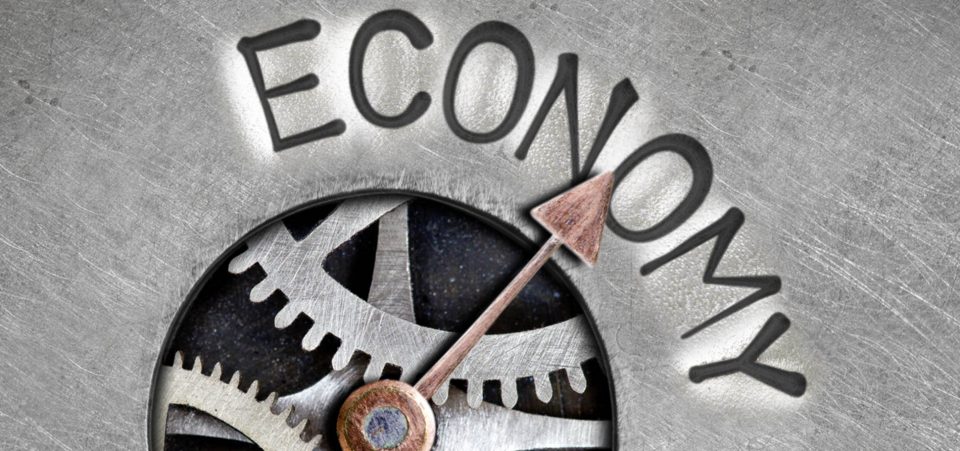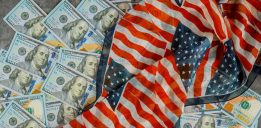What Does a Shrinking U.S. Workforce Mean for the U.S. Economy?
Everything seems to be lining up with our worst expectations. There is a worldwide disruptive force, if you will, that has fueled a disillusionment for politics, geopolitics, and economics. Many would argue that this willful ignorance may not be all that bad, since stocks on Wall Street continue to be traded for eye-watering sums. Yet, as the shrinking U.S. workforce shows, there’s something rotten in the state of the U.S. economy in 2017.
The odd dichotomy of an uber-bullish market resting on the foundation of a weak economy is not a unique phenomenon. It happened before, and one of those times happened to be in 1929. It’s too bad that the world had to find out about the weakness of the stock market foundations abruptly one otherwise fine day in October of that year.
It’s a classic case that ostriches in the savanna know well. As the myth goes, they bury their heads in the sand, because if they choose not to see the threat or the source of the problem, it will go away and spare them. The ostrich reality is different, but when the metaphor is applied to investors and the economy, it explains the massive stock market bubble of 2017.
Fundamentals Don’t Matter for the U.S. Economy Any Longer
At present, for Wall Street, economic fundamentals would appear to be inconsequential external factors at worst. There’s almost the idea that stocks go up without risk. “Why worry about major market corrections, when even the small ones aren’t happening?” seems to be the norm. But, nothing could be further from fact.
If you were to limit your gaze on the stock market, you’d be right for thinking that the U.S. economy is thrilling. But, if you look at the economy where it affects actual people, the image that emerges is less than perfect. The recent jobs data is deceiving, especially with the Federal reserve’s plans to raise interest rates.
It might simply be the low interest rates that have sustained the limited jobs growth rate the economy has generated so far. An additional rise, however small, could disrupt the balance. The inflation that the rate hike is supposed to avert is mystical. Wages have increased marginally at best, if at all, in real terms. (Source: “It’s Not Avocado Toast But Stagnant Wages Dimming American Dream,” NBC News, June 5, 2017.)
Then there’s the problem that, since the 2008 recession, even if there has been a slight recovery—from the crash, that is—salaries have dropped 23%! (Source: “U.S. jobs rose since ’08 crisis, but pay is 23 pct less: report,” Reuters, August 11, 2014.)
That is something that has been lost in the perspective of the alleged job recovery. Even if unemployment has improved somewhat since 2008, underemployment has grown.
In detail, the U.S. economy in May created a total of 138,000 new non-farm jobs. That’s down from 211,000 in April. (Source: “Employment Situation Summary,” Bureau of Labor Statistics, last accessed June 6, 2017.)
The figures are lower than market forecasts, which reported an increase of 185,000 new units, and lower than the calculations made by the ADP Research Institute, which reported about 253,000. (Source: “U.S. companies add 253,000 jobs in May: ADP,” Reuters, June 1, 2017.)
The unemployment rate has nominally dropped to 4.3%, slightly lower than the expected 4.4% and in line with that of the previous month. The monthly number of hours worked remained at 34.4 hours a week, while the participation rate at work decreased by 0.2%. By all accounts, it would appear as if the U.S. economy is growing and generating jobs. (Source: Bureau of Labor Statistics, op cit.)
The Job Numbers Are Still Obama’s Legacy
President Donald Trump has admittedly had little to contribute to jobs yet. The job number legacy is still experiencing the tail effect of the Obama policies. But suffice it to say, the so-called post-2008 recession recovery has created jobs of the precarious and part-time variety. These include many in the bartender and waiter category. Manufacturing has left the building and Trump’s best efforts will fail to bring them back.
That’s important because jobs, in theory, drive demand. Paradoxically, such demand manifests itself in more imports. That is, Americans are sending more of their money abroad, so how’s that supposed to be good for the economy in the longer run? Indeed, there’s something wrong with this picture. Or rather, there’s something wrong with how it’s being interpreted.
For evidence of the problem, consider the multiple bubbles that this supposedly improving economy has been generating. Silicon Valley is not just a place where they design new smartphones, computer chips, and social media.
It has fueled one of the biggest real estate bubbles in history. Housing, even modest 1,000-square-feet accommodations, has become so expensive that many Bay Area citizens have opted for cheaper alternatives. Even as the Nasdaq has set successive records, many tech employees live in cars and vans. Some wealthier ones can choose to live in an RV. Rent has simply become unaffordable for many. (Source: “High rents force some in Silicon Valley to live in vehicles,” PBS NewsHour, August 13, 2016.)
Yes, high rents have forced some in Silicon Valley to live in vehicles. And that’s in an area that is rich in jobs and opportunities. Imagine, then, what some less-fortunate regions of the U.S. must be experiencing.
Reality and Fantasy in Silicon Valley
Reports revealing the difference between the façade of Silicon Valley’s well-being/success and the sad reality did not come out of the alternative media. They were the subject of mainstream reports. The interview cited above was curated by Joanne Elgart Jennings for “NewsHour Weekend” on none other than PBS. So, even the apparently uber-successful tales have a dark side—or collateral damage, as they say.
As for stories that differ sharply from reality, consider that Silicon Valley’s real estate bubble is matched only by its lack of innovation. That sounds impossible, but this problem is demonstrated by the embarrassing tale of “Juicero.” Even the name of this machine is unoriginal. It was supposed to be a $400.00 blender that saved users the trouble of going out to get the fruit for their juice—and cleaning up the mess.
The fruits came in packets, just like the popular coffee machines that brew coffee in little containers. It turns out, users can just as easily squeeze Juicero packets by hand instead of using the special and expensive blender. Juicero became the big joke of Silicon Valley. But it is a monument to the lack of new ideas being generated there. (Source: “Silicon Valley’s $400 Juicer May Be Feeling the Squeeze,” Bloomberg, April 19, 2017.)
IPOs of new real tech companies have dropped. But that doesn’t quite capture the problem at the heart of the matter. It seems as if good ideas are running out and a vicious circle of greed and lazy thinking has taken its place. Silicon Valley was once the place where the concept of the smartphone emerged. The personal computer was developed there, as was the software that made it possible for millions of people, for just a few hundred dollars, to have more computing power than the “Apollo 11” mission on their laps.
Now, just as Wall Street used to suck all the brightest minds from the Ivy League, Silicon Valley is importing the best brains from all over the world—not just the United States. But what are these bright minds developing? Enter “Snapchat,” an app that offers users the ability to send self-destructing messages like in Mission Impossible or James Bond movies. Its IPO shot to the stars, rivaling the market capitalization of some major automobile companies.
Brilliant Minds Are Wasted
Brilliant engineers, mathematicians, and physicists who could be working on the true advancement of mankind are happy to park their brains and efforts on silly apps. The other thing these apps do is destroy jobs, without actually leaving a real benefit behind. Take the example of Uber Technologies, Inc. It has so-called employees, who have to supply their own vehicle. They also have to maintain it and pay its insurance.
Uber offers little job security in return for the driver’s contribution, and the company has worked diligently to come up with a driverless car. It will do away with the driver altogether, generating many profits and eliminating many jobs. Uber is just one example. But the fact is that Silicon Valley “visionaries” know that their inventions destroy jobs. They come up with silly apps, not workable flying cars or cures for cancer. It’s ultimately pointless tech that have citizens as the ultimate cost.
But they don’t pay the price. Indeed, the price is the elimination of many jobs. Silicon Valley is working to eliminate jobs and the best it has come up with will cost most people the loss of what it means to be a productive citizen. This will happen if a basic income is introduced. Basic income will ensure that the Silicon Valley millionaires remain as such.
Robots and other automatons will perform all kinds of work tasks for free while basic income will provide former workers an even lower salary than the so-called “sharing economy” that Uber epitomizes. Yes, the basic income will cut taxes for the rich, but it will also end up reducing what little there is left of the welfare state. The scheme risks exacerbating social and economic differences rather than bridging them.
Silicon Valley’s specialty is the so-called unicorn startups, which are worth—according to what logic is unclear—tens of billions of dollars, such as Airbnb, Uber, and Palantir Technologies. Their over-valuation is obvious to everyone, but as in the case of the dot-com bubble, no one wants to say that the emperor has no clothes before the storm arrives. Their only long-lasting potential is to eliminate jobs and make a handful of people richer. As for me, I still want to hope that real innovation will replace speculative games.








